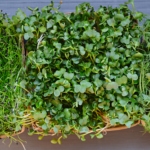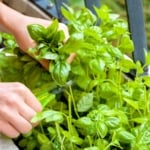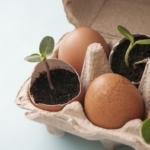It’s Seed Shopping Time!
Timely tips on ordering seeds for your garden.
Deep in the recesses of winter, with snow drifts as high as buildings, there is nothing that helps cure my winter blues more than leafing through the seed catalog and dreaming of what to plant this coming spring. Yard long pole beans, dark purple carrots, crunchy Chinese cabbages— the possibilities are endless! But, of course, there is still snow and a layer of ice covering most gardens but, as all good gardeners know, a little planning goes a long way. One of the first and most important steps to a successful garden is planning. That means ordering and organizing your seeds for the season.
If you haven’t already purchased your seeds for the season, here are a few tips to help make the process of seed ordering a little more easy and enjoyable.
Shopping For Seeds
- Count your blessings, and your seeds. Seed catalogs can be very alluring with their bright, beautiful pictures and descriptions of brand new disease-resistant hybrids and family favorite heirlooms. It’s easy to flip through those catalog pages and forget all about that shoebox full of seeds in your basement. But a gardener’s best friend is frugality, and you’d be doing yourself a disservice (and Mother Nature some disrespect) if you didn’t take the lid off that shoebox and look carefully over some of your seeds from years past. Although it can be a bit tedious, it will help you in the long run for planning if you can catalog the different varieties you have as well as the number of seeds for each variety.
- To sprout or not to sprout? In addition to counting and cataloging your seeds, you will want to know the viability of your seeds. The easiest way to do this is to check the “Packaged By” date on each seed packet. Most vegetable seeds will keep for about three years if they’ve been kept in a cool, dry place, away from moisture. If your seeds are new and you’ve had a good storage place, you should be in luck with your germination. If you are unsure of the conditions in which your seeds were kept, or how old they are, you might want to test their viability. This is actually very easy, and is a lot of fun to do with kids. Simply moisten a paper towel and lay 10 seeds on the towel. Place another moist (but not soaking wet) towel over the seeds. Fold both towels and place them in a plastic zipper bag, making sure the seeds aren’t touching. After two days, check on the seeds, then once a day for the next week, to see how many germinate. If the towel dries out, just moisten it again. The number of seeds that germinate will tell you the viability. If seven seeds germinate, that means about 70% of the seeds you plant from that packet will germinate. If only two sprout in the paper towel, you might want to buy more of that variety or plant those seeds very thickly.
- Eat what you grow and grow what you like. One of the most common pieces of garden advice given by amateurs and experts alike is to grow the kinds of vegetables you like to eat. It’s seems like a no-brainer, but there are lots of gardeners who can’t seem to let go of the idea that they should grow a certain kind of vegetable. A good example of this is a woman who for years grew tomatoes in her garden, despite having a terrible allergy to all plants in the Nightshade family. She said she just couldn’t imagine a garden without tomatoes. She finally realized how much space, time and energy she was wasting on growing tomatoes she never got to enjoy, and now uses that space to grow rows of Brussels sprouts. Rather than waiting years to make this discovery, try to be upfront with yourself and your family now about your secret dislike of broccoli or your disdain for harvesting beans. Both you and your garden will be better for it.
- Buy what you need. Now that you’ve counted and organized your seeds, tested their germination, and decided what you really want to grow, it’s time to take look through your catalog and try to purchase the seeds you need (as opposed to those you just really, really want!) This means that if, after looking through your shoebox, you discover you have a combined 200 seeds of four different varieties of heirloom tomatoes from two years ago, you might want to reconsider purchasing an entirely different variety of tomato and try to use what you have. Buying what you needs also means taking into account the size of your garden plot and how many seeds you are realistically going to plant of that variety, not just this year but in the years to come in your space. A packet of cucumbers is likely to have more seed than you will use in your home garden in the amount of time before the seeds go bad. A packet of lettuce seeds, however, will probably be used up in one season, or at most two. When choosing your seeds, make sure to pay attention to quantity. And if there are a number of different varieties of vegetables you’d like to try but know you don’t need that many seeds, it’s worth talking to some friends to see if they want to go in on an order together or swap seeds with you.
- Find fun with frugality! While the importance of frugality when planning to order your seeds can’t be overemphasized, it’s also a good idea to indulge, even a little, and buy one or two of those different varieties you’ve been dying to try. This brings me to my next point …
- Think Heirloom. If you’re looking to try new varieties of fruits and vegetables and haven’t yet delved into the world of heirloom plants, you don’t know what you’re missing. Growing heirlooms is not only a way to take a magical step back into your grandmother’s garden, it also helps to keep agricultural diversity alive and well in your bioregion, and in the country. There are seed catalogs out there that specialize in heirloom varieties, though most local seed distributors, and some national ones, carry at least a few. So take a peek and pick one, if you haven’t already.
Until next time, keep growin!
Sherie Blumenthal
Sherie Blumenthal is a Food Access Coordinator with Lots to Gardens, an urban gardening and community nutrition initiative sponsored by St. Mary’s Health System in Lewiston, Maine.






I want to know when is it time to plant red beets??? Thank you..
Victoria, That really depends on where you live. Ask at your local greenhouse or agricultural extension service.
A’nt this fun I am no longer able to do this all by myself so I have got my 9 year old grandson
to help not only will he be learning but also tasting what we grew I love it
I live in fl and I have A lot of cabbage,I want to make saurkraut. does any one know the correct signs to do this. thanks
I need to transplant a dwarf peach tree and a Fig tree.
What is the best time to do it?
March 22/23 ? by the F A. the ground still frozen.
The best time is after April 18/20? by the F.A. the frozen period pass.
I always follow your advises in gardening, Thanks .
Thanks Gladys!
your information is ALWAYS spot on and up to date. thank you!
Thanks for the above information on how to find out if your old seeds are good. I like to know which month to plant different vegetables.